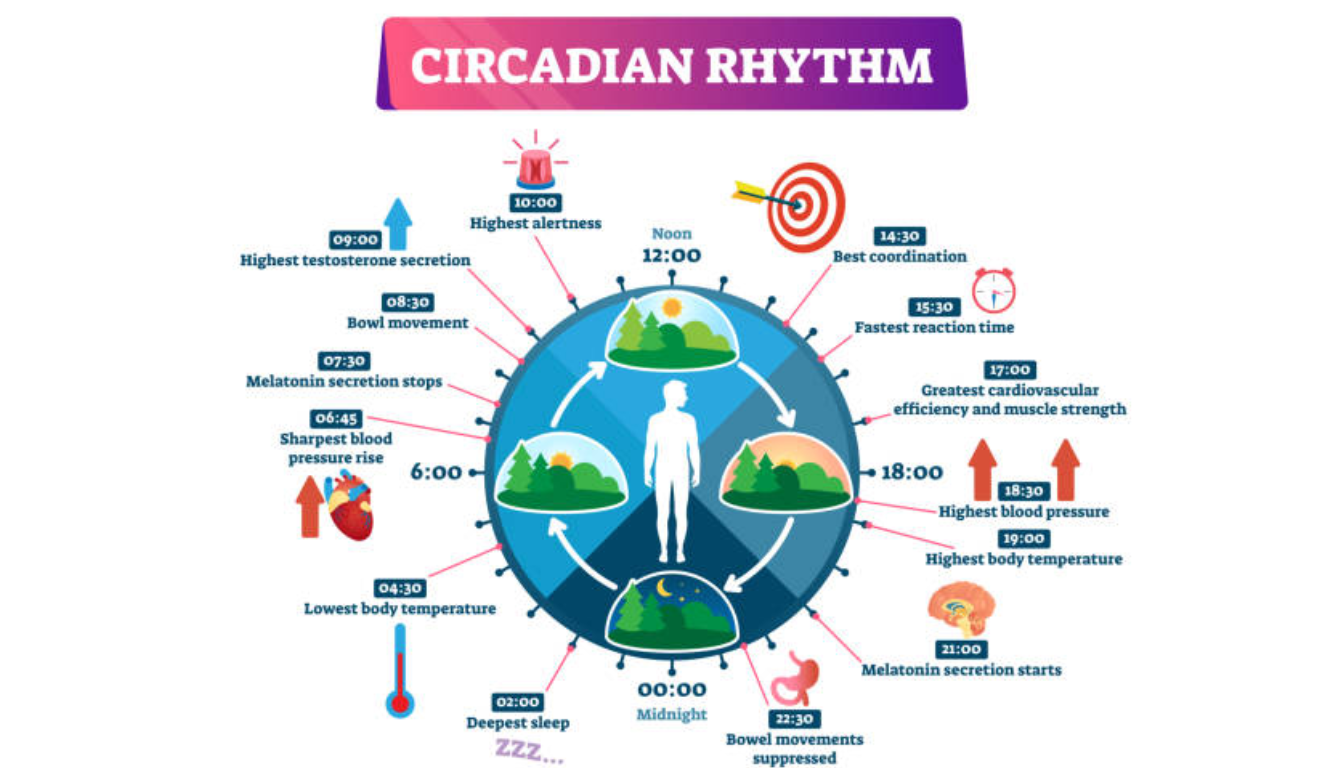
Can High Altitudes Shift Your Gut’s Balance?
Imagine standing atop a mountain, surrounded by breathtaking views and crisp, thin air. While you enjoy the scenery, your gut microbiome undergoes significant changes due to the high altitude. Research shows that at elevations above 3,000 meters (10,000 feet), the gut experiences shifts that affect digestion, immunity, mental clarity, and nutrient absorption. This article examines how high altitudes shift your gut’s balance and how your body adapts to these unique challenges.

Key Takeaways
- Reduced Microbial Diversity: High altitudes decrease gut bacteria variety, impacting digestion and immunity.
- Increased Stomach Acid: Higher elevations lead to more stomach acid, causing discomfort.
- Gut and Mood Connection: Shifts in gut bacteria may affect mood, cognition, and mental clarity.
- Dietary Solutions: Fermented foods, probiotics, and a balanced diet help maintain gut balance at high altitudes.
- Future Innovations: Advances in probiotics and synthetic microbes offer new ways to support gut health at altitude.
Mountain Mettle: How High Elevations Tinker with Your Tummy
High altitudes bring unique challenges like low oxygen levels, intense UV radiation, and colder temperatures. The body directs blood flow and oxygen to vital organs such as the heart and lungs to survive. As a result, the gut receives fewer resources. This shift can slow digestion, reduce nutrient absorption, and cause symptoms like nausea, diarrhea, and loss of appetite. Studies show that microbial diversity—the variety of bacteria in the gut—declines significantly at altitude, harming overall gut health.

Moreover, high altitudes disrupt the gut-brain axis, a strong link between our digestive system and mental well-being. With fewer bacteria types, the gut produces less serotonin, a neurotransmitter crucial for mood regulation. This can lead to increased irritability, anxiety, and mental fog. Therefore, altitudes shift your gut’s balance, affecting both physical and psychological resilience.
Cellular Adaptations in Gut Bacteria at High Elevations
Ascending to higher altitudes introduces oxidative stress to your gut bacteria. Oxidative stress can weaken or kill sensitive bacteria. Meanwhile, more resilient strains begin to dominate. This microbial shift creates an imbalance, impacting digestion and immune health. Oxidative stress is a primary way altitudes shift your gut’s balance at the cellular level, altering microbial diversity and resilience.
However, some bacteria have evolved to survive these stressful conditions by producing their own antioxidants. These antioxidant-producing bacteria help counteract the cellular damage caused by low oxygen levels, maintaining gut stability even in harsh environments. This adaptation keeps the gut microbiome functional, ensuring essential digestive processes and immune functions continue despite environmental pressures.
| Condition | Effect on Gut Microbiome | Example of Bacterial Adaptation |
|---|---|---|
| Low Oxygen | Reduced microbial diversity | Oxygen-tolerant strains thrive |
| Oxidative Stress | Weakening of sensitive bacteria | Antioxidant-producing bacteria |
| Nutrient Imbalance | Imbalanced nutrient absorption | Carbohydrate-processing microbes |
Understanding these cellular changes highlights how gut bacteria adapt to oxidative stress at high elevations. This helps maintain balance despite environmental challenges. Thus, altitudes shift your gut’s balance by forcing bacteria to evolve and survive under more challenging conditions.
Enzyme Exodus: Digestive Power Struggles in Thin Air
Hypoxia, or low oxygen, directly impacts the efficiency of digestive enzymes in the gut. These enzymes are essential for breaking down food and absorbing nutrients. At high altitudes, reduced enzyme activity can lead to bloating, nausea, and indigestion as the gut struggles to process even simple foods. This enzymatic slowdown is another core mechanism through which altitudes shift your gut’s balance, affecting nutrient processing.
High-altitude travelers adjust their diets to include easily digestible foods like cooked vegetables, rice, and broth-based soups to counteract these effects. These nutrient-dense yet gentle foods reduce strain on the digestive system. Consequently, the gut better copes with reduced enzymatic activity. Additionally, enzyme supplements may support digestion and maintain gut balance.
This reduced enzyme function also means that key vitamins and minerals, such as B vitamins and iron, might not be fully absorbed. Nutritional gaps can weaken physical performance and mental clarity, adding strain as the body acclimates. Therefore, dietary adjustments and possible supplementation are essential to support the gut in managing high-altitude demands and ensure that altitudes shift your gut’s balance does not compromise your health.

Leaky Gates: High Elevation’s Toll on Gut Barriers
Another significant impact of high altitudes is increased gut permeability, often called “leaky gut.” Low oxygen levels and the diversion of resources to vital organs can weaken the gut lining. This causes gaps that allow undigested food particles and toxins to enter the bloodstream. This influx can lead to inflammation, disrupt the immune system, and worsen altitude sickness symptoms.
| High-Altitude Condition | Impact on Gut Health | Common Symptoms |
|---|---|---|
| Increased Gut Permeability | Allows toxins to enter the bloodstream | Inflammation, nausea |
| Reduced Nutrient Absorption | Fewer nutrients absorbed efficiently | Weakness, fatigue |
| Weakened Gut Barrier | Compromised immunity and gut health | Diarrhea, bloating |
To counteract leaky gut at high altitudes, travelers use supplements like glutamine, which helps fortify the gut barrier. Magnesium and Vitamin C also reinforce the gut lining and reduce inflammation. These nutrients maintain the gut’s structure and function, making them valuable for managing how altitudes shift your gut’s balance.
Additionally, increased gut permeability can reduce nutrient absorption, leading to deficiencies that weaken the body’s response to altitude. Iron, calcium, and B vitamins are often less absorbed in high-altitude environments, contributing to fatigue and reduced immune resilience. Focusing on nutrients that support gut integrity helps travelers and high-altitude dwellers manage these gut challenges, protecting both digestive and overall health in harsh conditions.
Defensive Flora: Your Gut’s Shield Against High-Altitude Strains
The gut plays a crucial role in immune health, acting as a barrier against pathogens and supporting immune responses. High altitudes can disrupt this balance, as shifts in gut bacteria composition weaken immune defenses. This makes individuals more susceptible to infections and worsens symptoms of altitude sickness. When altitudes shift your gut’s balance, they impact not only digestion but also the body’s ability to fight off illnesses.
| Immune Support Strategy | Benefit |
|---|---|
| Probiotic Supplements | Reinforce gut barrier, enhance immune resilience |
| Vitamin C and Zinc | Strengthen immune defenses, reduce inflammation |
| Balanced Diet | Support diverse microbiome, boost immunity |
Probiotic supplements that reinforce the gut barrier are particularly helpful in maintaining immunity at high altitudes. Strains like Lactobacillus and Bifidobacterium enhance the gut’s ability to block harmful pathogens, supporting overall immune resilience. Additionally, consuming immune-boosting nutrients such as Vitamin C and zinc strengthens the body’s defenses, further reducing the impact of altitude on gut and immune health.
Understanding the interplay between gut health and immunity highlights the importance of maintaining a balanced microbiome, especially in challenging environments. Supporting gut health enhances the immune system’s ability to respond to the unique stresses of high altitudes. Consequently, altitudes shift your gut’s balance by influencing both immune function and microbial composition.
Mind Meets Microbes: The Psychological Impact of Elevated Environments
Altitude affects more than just physical health; it also impacts mental clarity and emotional balance through the gut-brain axis. This connection links the gut with the brain, meaning that shifts in gut microbiota can influence mood, cognition, and even sleep. Reduced microbial diversity at altitude can lead to decreased production of serotonin and dopamine, neurotransmitters essential for managing stress and emotional stability. As a result, many climbers and high-altitude residents experience “altitude fog,” characterized by difficulty concentrating, memory issues, and irritability.
| Gut-Brain Support Strategy | Benefit |
|---|---|
| High-Fiber Foods | Support serotonin production, stabilize mood |
| Probiotic-Rich Foods | Enhance microbiome diversity, reduce stress |
| Regular Sleep Patterns | Maintain circadian rhythm, support mental clarity |
Incorporating high-fiber foods and probiotics stabilizes the gut-brain connection, supporting cognitive function and mood resilience. Foods like oats, bananas, and fermented vegetables boost serotonin production and maintain a healthy gut microbiome. This helps manage the mental strain associated with high-altitude environments. Addressing the gut-brain axis allows individuals to maintain mental clarity and emotional balance, even when altitudes shift your gut’s balance in challenging ways.
Ancient Eats: Indigenous Recipes for a Resilient Gut
Indigenous communities living at high altitudes, such as the Tibetans and Andeans, have developed unique diets tailored to support gut health in low-oxygen conditions. Tibetan diets include yak butter tea and fermented dairy products, rich in probiotics that help maintain gut balance. These high-fat, nutrient-dense foods provide essential healthy bacteria, supporting a microbiome that withstands the strains of altitude.
In the Andes, locals traditionally chew coca leaves to reduce nausea and increase stamina. This aids the body’s adjustment to high-altitude environments. These practices show how traditional diets and natural remedies mitigate the gut challenges of altitude. Tibetan and Andean diets foster a microbiome more resilient to gut challenges, showcasing the role of traditional foods in maintaining gut health.
| Population | Unique Gut Microbiome Feature |
|---|---|
| Tibetans | Higher levels of Prevotella for digesting complex carbohydrates |
| Andeans | Gut bacteria supportive of immune function and cold tolerance |
These traditional practices offer cultural insights and effective strategies for modern travelers to protect their gut health at altitude. Incorporating fermented foods or specific herbal remedies into the diet can provide similar benefits. This supports the gut microbiome and reduces altitude sickness symptoms. Through these dietary choices, indigenous communities demonstrate how altitudes shift your gut’s balance and how to maintain gut health in extreme environments naturally.
Survival of the Fittest: Gut Microbes Adapt to Extreme Heights
High-altitude populations have adapted to their challenging environments for centuries, resulting in highly resilient gut microbiomes. Comparing high-altitude groups like Tibetans and Andeans to low-altitude populations reveals significant microbial diversity and function differences. For instance, Tibetans have a higher prevalence of Prevotella, a bacterium that helps digest the complex carbohydrates in their high-barley diets. This adaptation supports nutrient absorption and creates a balanced gut microbiome suited to altitude demands.
These evolutionary adaptations show how the gut microbiome is shaped by environmental pressures, developing traits that make it resilient to altitude-related challenges. This resilience explains why high-altitude residents often experience fewer digestive issues than newcomers, as their microbiomes better handle the stresses of low oxygen and oxidative stress. Understanding these microbial adaptations provides insights into human resilience, showing that both diet and generations of environmental interactions influence our gut health. Thus, altitudes shift your gut’s balance by driving evolutionary changes in gut bacteria.
Peak Performance: Athletes Balancing Gut Health in the Heights
Athletes often train at high altitudes to boost endurance, cardiovascular efficiency, and overall resilience. However, the high-altitude environment also places additional stress on their gut health. Reduced oxygen levels and increased physical exertion can disrupt microbial diversity and increase gut permeability, impacting nutrient absorption and recovery. These factors can lead to gastrointestinal discomfort and slower recovery times, hindering athletic performance. Consequently, altitudes shift your gut’s balance, affecting athletic outcomes.

| Nutritional Component | Benefits for Athletes |
|---|---|
| Fiber-Rich Foods | Supports microbial diversity, enhances gut stability |
| Lactobacillus Probiotics | Improves resilience and nutrient absorption |
| Glutamine | Strengthens gut barrier, aids recovery |
Athletes adopt high-fiber, high-carbohydrate diets that promote microbial diversity and energy levels to support gut health during altitude training. Supplements like Lactobacillus plantarum and glutamine support the gut lining and reduce gastrointestinal distress. Additionally, athletes prioritize foods such as oats, chia seeds, and legumes, which support a diverse and stable gut microbiome. These strategies maintain gut balance, ensuring that the physical demands of altitude training do not compromise digestive health.

By maintaining gut health, athletes maximize the benefits of altitude training while minimizing negative impacts on their digestive system. This ensures optimal performance and recovery. Thus, altitudes shift your gut’s balance by challenging athletes to adapt their gut health strategies.
Rhythm and Gut: Syncing Your Clock with High Elevation Life
At high altitudes, disruptions in circadian rhythms further affect gut health. Factors like jet lag or night-time climbs disturb natural sleep patterns, altering gut bacteria composition and digestion. Circadian misalignment exacerbates altitude sickness symptoms by throwing the gut microbiome off balance, increasing inflammation and digestive discomfort.
| Circadian Disruption Factor | Impact on Gut Health | Mitigation Strategy |
|---|---|---|
| Jet Lag | Alters gut bacteria composition | Regular meal times, light exposure |
| Night-Time Climbing | Disrupts sleep patterns, affects digestion | Consistent sleep schedules, restful environment |
| Irregular Eating Times | Imbalances microbiome diversity | Structured meal plans |

Maintaining a stable circadian rhythm is essential for gut health at altitude. Regular meal timing, exposure to natural light, and consistent sleep schedules stabilize the microbiome. This alignment reduces strain on gut health and minimizes altitude’s impact on the gut’s balance, making altitude adjustments smoother and less disruptive to overall health. Consequently, altitudes shift your gut’s balance by affecting your internal rhythms and digestion.
Fermentation Fix: Probiotic Power for Altitude Adventures
Fermented foods like kimchi, sauerkraut, and Tibetan yak butter tea are rich in probiotics that support a balanced gut microbiome. High-altitude populations have long relied on these foods to stabilize gut health, aid digestion, and boost immune function. Incorporating fermented foods into a high-altitude diet helps travelers and climbers maintain microbial diversity, reducing the risk of gut-related issues and supporting overall health. This practice ensures that altitudes shift your gut’s balance in manageable ways.
| Fermented Food | Probiotic Content | Health Benefit |
|---|---|---|
| Kimchi | Lactobacillus species | Enhances digestion, reduces inflammation |
| Sauerkraut | Bifidobacterium species | Boosts immune function, supports gut health |
| Yak Butter Tea | Beneficial bacteria from fermentation | It provides healthy fats, supports digestion |
Probiotics are beneficial because they introduce healthy bacteria to the gut, offsetting microbial losses that occur at altitude. These bacteria aid in digestion, reduce inflammation, and enhance nutrient absorption, creating a healthier and more balanced gut in high-altitude environments. Regular consumption of fermented foods naturally supports gut health, helping the body adapt to altitude-induced shifts and maintain overall well-being.
By integrating fermented foods into their diets, individuals leverage traditional practices to support their gut microbiome. This ensures a resilient and balanced digestive system even in challenging high-altitude conditions. Thus, altitudes shift your gut’s balance by necessitating the inclusion of probiotics and fermented foods for optimal health.
Supplemental Support: Essential Nutrients for Elevated Gut Health
Certain nutrients become critical for maintaining gut health and overall resilience at high altitudes. Essential nutrients like iron, folate, and B vitamins are often needed in higher amounts due to increased metabolic demand and reduced absorption. Supplementing these nutrients can help prevent deficiencies that impact physical performance and immune function.
| Essential Nutrient | Role in Gut Health and Altitude Adaptation | Supplementation Benefits |
|---|---|---|
| Iron | Supports red blood cell production and oxygen transport | Prevents anemia, enhances energy levels |
| Folate | Aids in DNA synthesis and cell repair | Supports gut lining integrity |
| B Vitamins | Crucial for energy metabolism and neurotransmitter production | Boosts energy, supports mental clarity |
| Glutamine | Strengthens the gut barrier and supports nutrient absorption | Reduces gut permeability, aids recovery |
| Magnesium | Supports muscle and nerve function | Reduces muscle cramps, enhances relaxation |
| Vitamin C | Boosts immune function and protects the gut lining | Enhances immune resilience, reduces inflammation |
Addressing these nutritional needs helps support gut health and overall resilience at high altitudes. This ensures nutrient absorption remains efficient despite environmental challenges. Incorporating these supplements into a high-altitude diet maintains gut integrity, boosts immune function, and supports overall health. Consequently, altitudes shift your gut’s balance by increasing the need for essential nutrients to maintain health.
Next-Gen Gut Guardians: Innovations in Probiotics for High Places
Interest in high-altitude health drives scientific exploration into specialized probiotics and synthetic microbes designed to thrive in low-oxygen conditions. Oxygen-tolerant probiotics are being developed to provide additional support for gut health, which is ideal for climbers, athletes, and high-altitude residents. These advanced probiotics aim to maintain microbial diversity and balance, even under the unique stresses of high-altitude environments.
| Innovation | Potential Benefit |
|---|---|
| Oxygen-Tolerant Probiotics | Maintain gut balance in low-oxygen conditions |
| Designer Microbes | Enhance nutrient absorption, lower oxidative stress |
| Personalized Nutrition Apps | Monitor and manage gut health in real-time |
| Microbiome Testing Kits | Track microbiome changes and adjust the diet accordingly |
Through microbiome engineering, researchers may create “designer microbes” that enhance nutrient absorption, lower oxidative stress, and strengthen immunity. These synthetic microbes offer targeted support for the gut, addressing specific challenges posed by high altitudes. Innovations in this field could revolutionize how we manage altitude-induced gut shifts, providing new tools for maintaining gut health in extreme environments.
Additionally, personalized nutrition apps and at-home microbiome testing kits empower individuals to monitor and manage their gut health in real time. These tools enable users to track how altitude affects their microbiome and adjust their diet or supplement regimen accordingly. This makes high-altitude health management more precise and accessible. Thus, altitudes shift your gut’s balance by introducing new technologies that support gut health.
Learning from High-Altitude Animals: Insights into Their Gut Resilience
Animals such as yaks and Himalayan macaques are naturally adapted to high altitudes, offering valuable insights into resilience. Their unique gut bacteria allow them to thrive in low-oxygen conditions, maintaining digestive efficiency and health. Studying these animals provides clues about natural microbiome adaptations that could benefit humans in similar environments.

For example, yaks possess gut bacteria that efficiently break down fibrous plant material, providing essential nutrients despite the harsh environment. Similarly, Himalayan macaques have a diverse gut microbiome that supports their high-fiber diets, ensuring robust digestion and nutrient absorption. These adaptations highlight the potential for leveraging similar strategies in humans to support gut health at altitude. This could lead to cross-species microbiome transfer or the development of probiotics based on these resilient strains.

| Species | Gut Microbiome Adaptation | Impact on Health and Digestion |
|---|---|---|
| Yaks | Efficient fiber-digesting bacteria | Sustained energy, robust nutrient absorption |
| Himalayan Macaques | Diverse microbiome supporting high-fiber diet | Enhanced digestion, overall health resilience |
Understanding these natural adaptations allows researchers to explore ways to support human gut health at altitude. Developing probiotics or dietary strategies inspired by these high-altitude animals could lead to innovative solutions for maintaining gut balance in extreme environments. Thus, altitudes shift your gut’s balance by encouraging adaptations that enhance resilience and health.
Ageless Gut: Longevity and Microbiome Health in the Heights
Long-term exposure to high altitudes may influence aging by fostering a resilient gut microbiome. High-altitude residents often show fewer signs of metabolic issues and improved immune function, suggesting that altitude-specific microbial profiles contribute to healthier aging. The gut’s adaptive mechanisms help maintain metabolic health and reduce the incidence of age-related diseases.
| Aspect | Impact on Aging | Gut Microbiome Contribution |
|---|---|---|
| Metabolic Health | Fewer signs of metabolic syndrome | Enhanced nutrient absorption, balanced microbiome |
| Longevity | Potentially increased lifespan | Protective bacterial strains, reduced inflammation |
| Immune Function | Stronger immune defenses | Immune-supportive gut bacteria |
Studies indicate that a balanced gut microbiome supports longevity by enhancing nutrient absorption, reducing inflammation, and supporting immune defenses. High-altitude living, with its unique dietary and environmental pressures, encourages the development of an efficient and resilient microbiome. This potentially offers protective benefits against the aging process. Understanding how altitude affects the gut across a lifetime can reveal whether certain microbial adaptations play a role in aging. This could inform gut health strategies for older populations at altitudes, providing insights into how altitudes shift your gut’s balance even as we age.
Food Metabolism and Caloric Needs at High Altitude
High altitudes significantly impact food metabolism and increase caloric requirements. The body’s metabolism accelerates to generate more heat and maintain energy levels in colder, low-oxygen environments. This heightened metabolic demand requires efficient food metabolism supported by a diverse and resilient gut microbiome. High-altitude living demands energy-dense diets rich in complex carbohydrates and healthy fats.

| Metabolic Adjustment | Impact on Gut Health | Dietary Response |
|---|---|---|
| Increased Caloric Needs | Higher energy expenditure | Energy-dense, nutrient-rich foods |
| Faster Metabolism | Requires efficient nutrient processing | High-carbohydrate, high-fat diets |
| Enhanced Food Metabolism | Supports sustained energy and digestion | Fiber-rich grains, legumes, and healthy fats |
To meet these increased caloric demands, high-altitude residents and travelers consume foods like quinoa, barley, and yak butter tea. These foods provide sustained energy and support gut bacteria that thrive in high-metabolism environments. Additionally, incorporating high-fiber grains and legumes ensures that the gut microbiome remains diverse and efficient in nutrient processing. This maintains a balanced gut despite the elevated metabolic stress.
By adjusting their diets to include these energy-dense and nutrient-rich foods, individuals support their gut health and overall metabolic function. This ensures that altitude-induced shifts in gut balance do not compromise their energy levels and health. Thus, altitudes shift your gut’s balance by increasing the need for energy-dense and nutrient-rich diets.
Altitude-Ready: Practical Tips for a Balanced Gut Above Sea Level
For those heading to high altitudes, here are some proven strategies to keep your gut in balance:
- Stay Hydrated: High altitudes increase dehydration risks, stressing the gut. Water-rich foods like cucumber and watermelon help retain moisture and stabilize digestion.
- Fiber and Probiotics: Whole grains, oats, and fermented foods support microbial diversity. Probiotics, especially Lactobacillus and Bifidobacterium, strengthen the gut lining and reduce discomfort.
- Take it Slow: Gradual ascent adapts your body and gut microbiome. This reduces the risk of altitude sickness and improves nutrient absorption.
| Strategy | Benefit |
|---|---|
| Water-Rich Foods | Prevents dehydration, supporting gut function |
| High-Carb Diet | Fuels energy, stabilizes microbial diversity |
| Probiotics | Enhances gut barrier, supports immunity |
Implementing these strategies helps maintain gut balance, ensuring your body remains resilient and healthy in high-altitude conditions. Whether you’re an athlete training at altitude, a climber tackling a mountain, or a resident living in a high-altitude region, these tips support your gut health and overall well-being. Consequently, altitudes shift your gut’s balance by necessitating proactive health strategies.
Conclusion: Balancing the Gut Amidst High Altitudes
Standing atop a mountain isn’t just a breathtaking experience—it’s also a challenge for your gut. High altitudes create unique demands on the gut microbiome, reducing microbial diversity, slowing enzyme activity, and altering mental clarity through the gut-brain axis. From the cellular resilience of gut bacteria to dietary solutions like fermented foods and specialized probiotics, every effort to support the gut counters the strains of altitude.
By learning from both traditional practices and modern science, we gain insights into the delicate balance of gut health at high altitudes. Whether through indigenous diets or cutting-edge microbiome innovations, maintaining a healthy gut at altitude is timeless and evolving. This ensures our bodies can handle the heights with resilience and adaptability, effectively managing how altitudes shift your gut’s balance.
FAQ
Q: What is considered high altitude?
A: High altitude refers to regions situated above 3,000 meters (10,000 feet) above sea level. In these areas, air pressure decreases, oxygen levels are lower, and temperatures tend to be colder, posing unique challenges to both humans and their gut microbiomes.
Q: How does high altitude affect our physiology?
A: At high altitudes, the body undergoes significant physiological changes. Digestion slows down due to reduced blood flow to the gut, gastric acid levels may increase, and the gut microbiome adapts to lower oxygen levels. These alterations can lead to digestive discomfort, impaired nutrient absorption, and increased susceptibility to altitude-related health issues.
Q: What are the digestive changes that occur at high altitudes?
A: High altitudes can disrupt digestion by increasing gastric acid production and reducing the efficiency of digestive enzymes. Additionally, the gut microbiome experiences decreased microbial diversity, which impairs nutrient absorption and can cause symptoms like bloating, nausea, and indigestion.
Q: How does high altitude impact the gut microbiome?
A: High altitudes cause significant shifts in the gut microbiome, reducing microbial diversity and altering the composition of gut bacteria. These changes help the body cope with low oxygen levels and environmental stresses but can also impact digestion, immunity, and mental health.
Q: What are the effects of acute and prolonged exposure to high altitudes on gut health?
A: Acute exposure to high altitudes leads to immediate changes in gut bacteria composition and increased gut permeability, contributing to symptoms like nausea and inflammation. Prolonged exposure results in more significant and lasting alterations to the gut microbiome, reducing microbial diversity and impacting overall gut health and immune function.
Q: What are the symptoms of altitude sickness, and how are they related to gut health?
A: Altitude sickness can cause symptoms such as nausea, vomiting, diarrhea, and abdominal discomfort. These gastrointestinal issues are linked to changes in gut permeability and shifts in the gut microbiome, which disrupt normal digestion and nutrient absorption. Maintaining a healthy gut can help mitigate these symptoms and improve resilience to altitude-related stress.
Q: How have human populations adapted to high altitudes?
A: Indigenous populations like Tibetans and Andeans have developed genetic and microbiome adaptations over centuries to thrive at high altitudes. Their gut microbiomes feature specific bacteria that aid in efficient nutrient absorption and oxygen utilization, enhancing their ability to cope with low oxygen environments and reducing the incidence of altitude-related health issues.
Q: Are there differences in the gut microbiomes of high and low-altitude populations?
A: Yes, significant differences exist. High-altitude populations such as Tibetans and Andeans have unique gut microbiomes with higher levels of specific bacteria like Prevotella, which help digest complex carbohydrates and support immune function. These adaptations are tailored to their environments, enhancing their ability to manage the physiological challenges of high altitude.
Q: How does high altitude affect the intestinal microbiota of animals?
A: Animals adapted to high altitudes, such as yaks and Himalayan macaques, possess distinct gut microbiota that enable them to efficiently digest fibrous plant material and thrive in low-oxygen, cold environments. These specialized gut bacteria enhance nutrient absorption and maintain digestive health under harsh conditions, similar to human adaptations.
Q: How can we maintain gut health at high elevations?
A: Maintaining gut health at high altitudes involves consuming a diet rich in carbohydrates and fiber to support microbial diversity. Incorporating fermented foods and probiotic supplements can help reinforce the gut microbiome and maintain the gut barrier. Additionally, staying hydrated and taking essential nutrient supplements like glutamine, magnesium, and Vitamin C can further support gut integrity and overall health.
Q: Why are dietary modifications important for those living at high altitudes?
A: Dietary modifications are crucial because they help maintain a balanced and diverse gut microbiome, which is essential for effective digestion and nutrient absorption in high-altitude environments. A well-adjusted diet supports gut health, enhances immune function, and mitigates the physiological stresses associated with low oxygen levels and harsh conditions.
Q: Can probiotics and supplements support gut health at high altitudes?
A: Yes, probiotics and specific supplements can support gut health at high altitudes by enhancing microbial diversity and reinforcing the gut barrier. Probiotics such as Lactobacillus and Bifidobacterium strains help maintain a balanced microbiome, while supplements like glutamine, magnesium, and Vitamin C reduce gut permeability and inflammation, preventing altitude-related digestive issues.
Q: What recent scientific findings are there on the effects of altitude on gut health?
A: Recent studies have revealed that high altitudes significantly alter gut microbiota composition, reduce microbial diversity, and increase gut permeability. These changes affect digestion, immunity, and mental health. Ongoing research is exploring specialized probiotics, synthetic microbes, and personalized nutrition strategies to mitigate these effects and support gut health in high-altitude environments.
Q: What are the potential health risks associated with high altitude and the gut microbiota?
A: High altitudes can lead to increased gut permeability, allowing toxins and undigested food to enter the bloodstream, which can cause inflammation and compromise immune function. These changes heighten the risk of altitude sickness, gastrointestinal discomfort, and infections. Maintaining a healthy gut microbiome is essential to mitigate these health risks and support overall well-being in high-altitude environments.
Q: What future research directions are being explored in this area?
A: Future research is focusing on developing advanced probiotics and synthetic microbes that thrive in low-oxygen conditions, enhancing nutrient absorption and reducing oxidative stress. Additionally, scientists are investigating microbiome engineering and personalized nutrition tools, such as real-time microbiome monitoring apps and at-home testing kits, to better manage gut health at high altitudes. Studies are also examining cross-species microbiome adaptations to inspire new strategies for supporting human gut health in extreme environments.
Source Links
High-Altitude Effects on Gut and Intestinal Microbiota
- High-altitude-induced alterations in intestinal microbiota
- The effect of exposure to high altitude and low oxygen on intestinal microbial communities in mice
- Effects of Hypoxemia by Acute High-Altitude Exposure on Human Intestinal Flora and Metabolism
- Effects of altitude on the gut microbiome and metabolomics of Sanhe heifers
- High-altitude exposures and intestinal barrier dysfunction – PubMed
- Frontiers | Oxygen enrichment protects against intestinal damage and gut microbiota disturbance in rats exposed to acute high-altitude hypoxia
- Longitudinal multi-omics analysis uncovers the altered landscape of gut microbiota and plasma metabolome in response to high-altitude – Microbiome
- High-altitude and low-altitude adapted chicken gut microbes have different functional diversity – Scientific Reports
- Frontiers | Impact of high-altitude acclimatization and de-acclimatization on the intestinal microbiota of rats in a natural high-altitude environment
- Gut microbiota contributes to high-altitude hypoxia acclimatization of human populations – Genome Biology
- Effects of high-/low-temperature and high-altitude hypoxic environments on the gut microbiota of sports people: A retrospective analysis
- Frontiers | High-altitude-induced alterations in intestinal microbiota
Altitude Effects on Other Microbiota (Oral and General Physiology)
- Impact of high altitude on composition and functional profiling of oral microbiome in Indian male population – Scientific Reports
- Effects of altitude on human oral microbes – AMB Express
- The current state and future direction of DoD gut microbiome research: a summary of the first DoD gut microbiome informational meeting
Altitude and General Health: Nutrition, Acclimatization, and Disease Prevention
- Altitude Sickness: Types, Prevention & Tips
- Infections at High Altitude
- How to Stay Healthy at Altitude
- Nutrition and Altitude: Strategies to Enhance Adaptation, Improve Performance and Maintain Health: A Narrative Review
- Diet and high altitude strongly drive convergent adaptation of gut microbiota in wild macaques, humans, and dogs to high-altitude environments
- Nutrition and Altitude: Strategies to Enhance Adaptation, Improve Performance and Maintain Health: A Narrative Review – Sports Medicine
- Frontiers | Diet and high altitude strongly drive convergent adaptation of gut microbiota in wild macaques, humans, and dogs to high-altitude environments
- What Can the Gut Microbiota of Animals Teach Us about the Relationship between Nutrition and Burden of Lifestyle Diseases?
Scientific Studies on Altitude Effects and Acclimatization in Animals and Humans
- The effect of exposure to high altitude and low oxygen on intestinal microbial communities in mice
- Association analysis of gut microbiota-metabolites-neuroendocrine changes in male rats acute exposure to a simulated altitude of 5500 m – Scientific Reports
- Metagenome and metabolome insights into the energy compensation and exogenous toxin degradation of gut microbiota in high-altitude rhesus macaques (Macaca mulatta) – npj Biofilms and Microbiomes
- Protocol for a prospective, controlled, observational study to evaluate the influence of hypoxia on healthy volunteers and patients with inflammatory bowel disease: the Altitude IBD Study
- Army researchers dug into the effects of MREs on gut health; here’s what they discovered
Practical Health and Nutrition at Altitude
- Tummy Troubles Up High: How Altitude Affects GI Physiology – I Spy Physiology Blog
- Your Gut and Hydration Levels Take a Major Hit at High Elevations—Here’s What You Can Do To Get Ahead of It
- The Importance of Maintaining and Improving a Healthy Gut Microbiota in Athletes as a Preventive Strategy to Improve Heat Tolerance and Acclimatization
- The Lesser-Known Effects of Living at Altitude
healxo
Your blog is a beacon of light in the often murky waters of online content. Your thoughtful analysis and insightful commentary never fail to leave a lasting impression. Keep up the amazing work!
Belli Health
Thank you for your feedback. Who knew that altitude affects your gut health. There is still a lot to learn about our gut health and our environment we interact with.













































2 comments